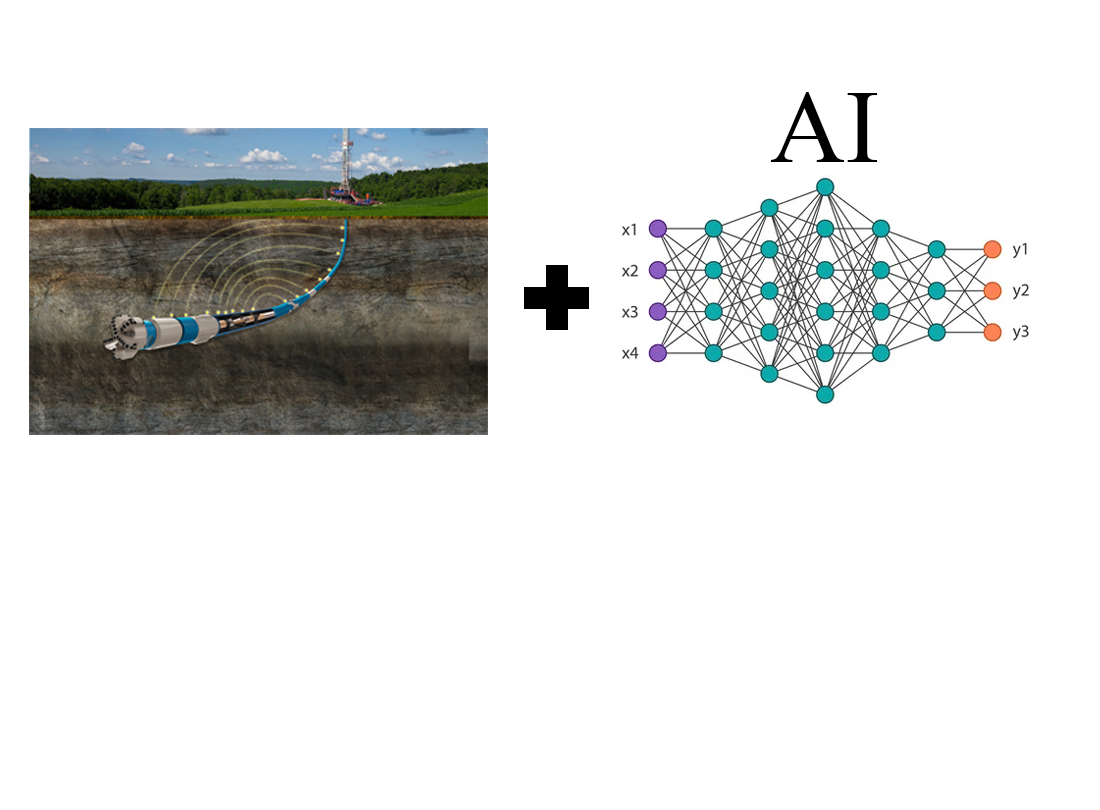Розробка моделі нейромережі для прогнозування оптимальної мінімальної швидкості для ефективного очищення свердловини
DOI:
https://doi.org/10.15587/1729-4061.2024.309725Ключові слова:
буріння свердловин, очищення свердловин, запобігання застряганню труб, нейронна мережа, машинне навчання, мінімальний дебітАнотація
Об’єктом дослідження є ефективне очищення свердловин під час буріння. Предметом дослідження є розробка моделі машинного навчання на основі нейронної мережі для прогнозування оптимальної мінімальної витрати бурового розчину. Проблема полягає в необхідності покращити ефективність очищення свердловин, щоб запобігти застряганню труб і пов’язаним з цим простоям і витратам.
Під час дослідження була розроблена та протестована модель нейронної мережі для прогнозування мінімального дебіту для очищення свердловин. Модель була навчена та протестована на даних, які показують її високу точність і надійність. Середня квадратична помилка досягла 0,019169 для LSTM і 0,0828 для контрольованого рекурентного блока, що вказує на точність прогнозів. Для ефективної обробки часових рядів даних і врахування довгострокових залежностей використовувалися такі архітектури нейронних мереж, як довгострокова пам’ять і контрольований рекурентний блок.
Результати пояснюються за допомогою передових архітектур нейронної мережі та алгоритмів машинного навчання, що дозволило досягти високої точності прогнозів. Ці архітектури забезпечують ефективне навчання моделі на великих обсягах даних, дозволяючи враховувати складні залежності та фактори впливу.
Відмінними рисами результатів є хороша точність прогнозів і можливість використання моделі в реальних умовах. Модель демонструє хорошу продуктивність і надійність у прогнозуванні мінімальної витрати.
Результати дослідження можуть бути використані для оптимізації процесів буріння свердловин. Практичні застосування включають використання моделі для прогнозування оптимальної мінімальної швидкості потоку в різних умовах, що зменшить ризики застрягання труб і підвищить ефективність бурових робіт. Модель може бути інтегрована в існуючі системи моніторингу та управління процесами буріння для підвищення їх продуктивності.
Посилання
- Busahmin, B. , Saeid, N. , Hasan, U. and Alusta, G. (2017) Analysis of Hole Cleaning for a Vertical Well. Open Access Library Journal, 4, 1-10. doi: 10.4236/oalib.1103579.
- Al-Azani, K., Elkatatny, S., Ali, A. et al. Cutting concentration prediction in hor-izontal and deviated wells using artificial intelligence techniques. J Petrol Explor Prod Technol 9, 2769–2779 (2019). https://doi.org/10.1007/s13202-019-0672-3.
- Husameldin Mahmoud, Ahmed Hamza, Mustafa S. Nasser, Ibnelwaleed A. Hus-sein, Ramadan Ahmed, Hamidreza Karami, Hole cleaning and drilling fluid sweeps in horizontal and deviated wells: Comprehensive review, Journal of Petroleum Sci-ence and Engineering, Volume 186, 2020, 106748, ISSN 0920-4105, https://doi.org/10.1016/j.petrol.2019.106748.
- Sifferman, T. R., and T. E. Becker. "Hole Cleaning in Full-Scale Inclined Well-bores." SPE Drill Eng 7 (1992): 115–120. doi: https://doi.org/10.2118/20422-PA
- Rasi, Marco. "Hole Cleaning in Large, High-Angle Wellbores." Paper presented at the IADC/SPE Drilling Conference, Dallas, Texas, February 1994. doi: https://doi.org/10.2118/27464-MS
- O'Brien, T. B., and M. Dobson. "Hole Cleaning: Some Field Results." Paper pre-sented at the SPE/IADC Drilling Conference, New Orleans, Louisiana, March 1985. doi: https://doi.org/10.2118/13442-MS.
- Saini, Gurtej Singh, Parham Pournazari, Pradeepkumar Ashok, and Eric van Oort. 2022. "Intelligent Action Planning for Well Construction Operations Demon-strated for Hole Cleaning Optimization and Automation" Energies 15, no. 15: 5749. https://doi.org/10.3390/en15155749.
- Awojinrin, Gbenga Thompson. "Machine Learning Workflow for the Determina-tion of Hole Cleaning Conditions." Paper presented at the SPE Annual Technical Conference and Exhibition, Houston, Texas, USA, October 2022. doi: https://doi.org/10.2118/212381-STU.
- Busahmin, Bashir & Saeid, Nawaf & Alusta, Gamal & Zahran, Elsaid. (2017). Review on hole cleaning for horizontal wells. Journal of Engineering and Applied Sciences. 12. 4697.
- Nivlet, Philippe, Bjorkevoll, Knut Steinar, Tabib, Mandar, Skogestad, Jan Ole, Lund, Bjornar, Nybo, Roar, and Adil Rasheed. "Towards Real-Time Bad Hole Cleaning Problem Detection Through Adaptive Deep Learning Models." Paper pre-sented at the Middle East Oil, Gas and Geosciences Show, Manama, Bahrain, Feb-ruary 2023. doi: https://doi.org/10.2118/213643-MS.
- Al-Rubaii, Mohammed Murif, Gajbhiye, Rahul N., Al-Yami, Abdullah, Al-shalan, Meshari, and Mohammed B. Al-Awami. "Automated Evaluation of Hole Cleaning Efficiency While Drilling Improves Rate of Penetration." Paper presented at the International Petroleum Technology Conference, Dhahran, Kingdom of Saudi Arabia, January 2020. doi: https://doi.org/10.2523/IPTC-19809-MS
- Du, Ke-Lin & Swamy, M.N.s. (2014). Recurrent Neural Networks. 10.1007/978-1-4471-5571-3_11. DOI: 10.1007/978-1-4471-5571-3_11
- Mohammadsalehi, M. and Malekzadeh, N. (2011) Optimization of Hole Clean-ing and Cutting Removal in Vertical, Deviated and Horizontal Wells. SPE Asia Pa-cific Oil and Gas Conference and Exhibition, Jakarta, 20-22 September 2011, SPE-143675-MS. DOI: 10.2118/143675-MS
- Ahmed, R. M., and N. E. Takach. "Fiber Sweeps for Hole Cleaning." SPE Drill & Compl 24 (2009): 564–573. doi: https://doi.org/10.2118/113746-PA
- Butt, Asad Muhammad, Hassan Alsaffar, Muhannad Alshareef, and Khurram Karim Qureshi. 2022. "AI Prediction of Brain Signals for Human Gait Using BCI Device and FBG Based Sensorial Platform for Plantar Pressure Measurements" Sen-sors 22, no. 8: 3085. https://doi.org/10.3390/s22083085

##submission.downloads##
Опубліковано
Як цитувати
Номер
Розділ
Ліцензія
Авторське право (c) 2024 Dinara Delikesheva, Erbol Essembayev, Aizada Sharauova, Jamilyam Ismailova, Nurlan Zaripov

Ця робота ліцензується відповідно до Creative Commons Attribution 4.0 International License.
Закріплення та умови передачі авторських прав (ідентифікація авторства) здійснюється у Ліцензійному договорі. Зокрема, автори залишають за собою право на авторство свого рукопису та передають журналу право першої публікації цієї роботи на умовах ліцензії Creative Commons CC BY. При цьому вони мають право укладати самостійно додаткові угоди, що стосуються неексклюзивного поширення роботи у тому вигляді, в якому вона була опублікована цим журналом, але за умови збереження посилання на першу публікацію статті в цьому журналі.
Ліцензійний договір – це документ, в якому автор гарантує, що володіє усіма авторськими правами на твір (рукопис, статтю, тощо).
Автори, підписуючи Ліцензійний договір з ПП «ТЕХНОЛОГІЧНИЙ ЦЕНТР», мають усі права на подальше використання свого твору за умови посилання на наше видання, в якому твір опублікований. Відповідно до умов Ліцензійного договору, Видавець ПП «ТЕХНОЛОГІЧНИЙ ЦЕНТР» не забирає ваші авторські права та отримує від авторів дозвіл на використання та розповсюдження публікації через світові наукові ресурси (власні електронні ресурси, наукометричні бази даних, репозитарії, бібліотеки тощо).
За відсутності підписаного Ліцензійного договору або за відсутністю вказаних в цьому договорі ідентифікаторів, що дають змогу ідентифікувати особу автора, редакція не має права працювати з рукописом.
Важливо пам’ятати, що існує і інший тип угоди між авторами та видавцями – коли авторські права передаються від авторів до видавця. В такому разі автори втрачають права власності на свій твір та не можуть його використовувати в будь-який спосіб.










